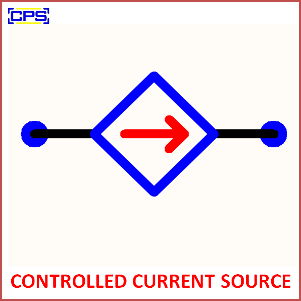A controlled current source is an active circuit element that provides a current output that is proportional to a controlling input signal. The current source maintains a specified current regardless of the voltage across it, within its operational limits.

Key Features of a Controlled Current Source:
- Input Control:
- The output current is governed by an input signal, which can be:
- A voltage (Voltage-Controlled Current Source, VCCS).
- Another current (Current-Controlled Current Source, CCCS).
- The output current is governed by an input signal, which can be:
- Output Current:
- Delivers a constant or varying current determined by the control input.
- Symbol:
- Represented in circuit diagrams with an arrow inside a diamond shape, indicating a controlled current flow.
Types of Controlled Current Sources:
- Voltage-Controlled Current Source (VCCS): The output current is proportional to an input voltage signal.Iout=k⋅VinI_{\text{out}} = k \cdot V_{\text{in}}Iout=k⋅VinWhere kkk is the proportionality constant.
- Current-Controlled Current Source (CCCS): The output current is proportional to an input current signal.Iout=k⋅IinI_{\text{out}} = k \cdot I_{\text{in}}Iout=k⋅Iin
Applications:
- Amplifiers and analog signal processing circuits.
- Active filters and oscillators.
- Simulating or modeling ideal current sources in circuit analysis.
- Control systems in power electronics and instrumentation.
A controlled current source is a versatile component in electronic circuits, allowing precise control of current flow based on external inputs.
